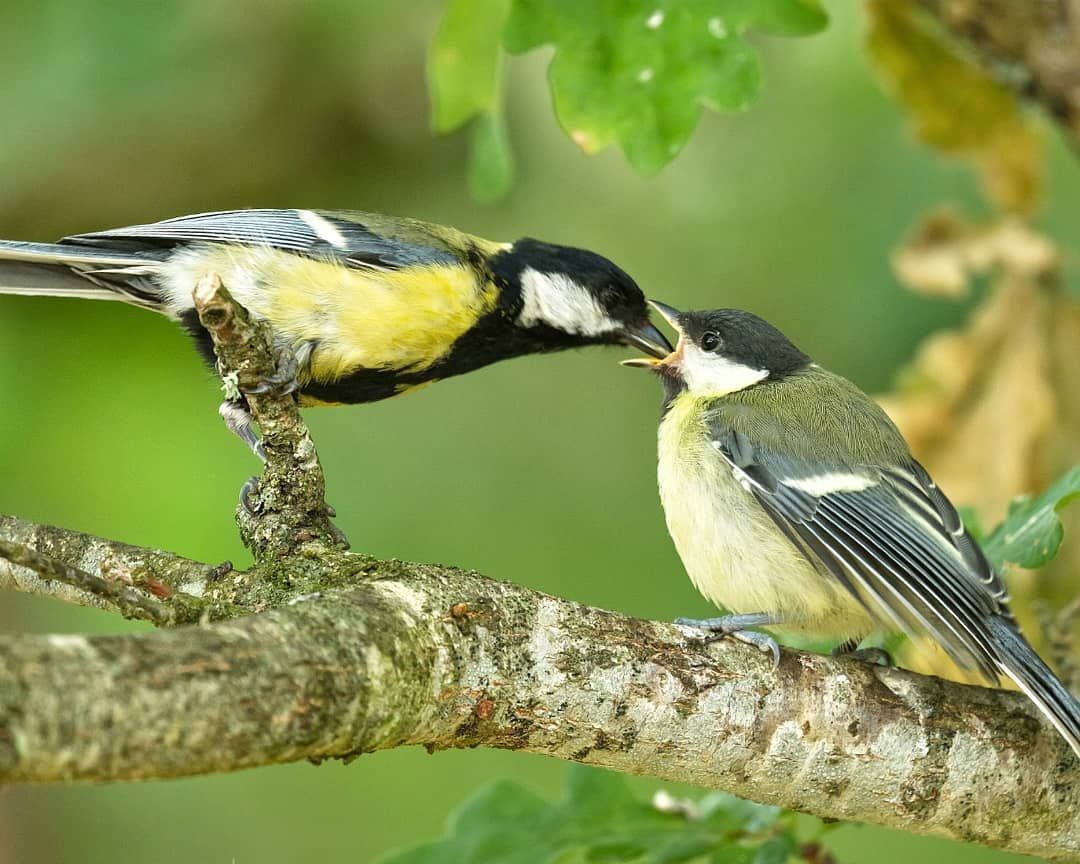Green and yellow with a striking glossy black head with white cheeks and a distinctive two-syllable song. It is a woodland bird which has readily adapted to man-made habitats to become a familiar garden visitor. It can be quite aggressive at a birdtable, fighting off smaller tits. In winter it joins with blue tits and others to form roaming flocks which scour gardens and countryside for food.

The Great Tit (Parus major) is a passerine bird in the tit family Paridae. It is a widespread and common species throughout Europe in any sort of woodland. It is resident, and most Great Tits do not migrate. In the past this species was considered a ring species with several subspecies covering a wide distribution, but these have now been separated.

Great Tits come in many races, but they fall into three groups. Great Tits in temperate Europe and Asia are essentially green above and yellow below. Great Tits in China, Korea, Japan and southeastern Russia are green above and white or yellow-tinged white below, and Great Tits in India and south-east Asia are grey above and whitish below.
The Great Tit is easy to recognize, large in size at 14 cm, with a broad black line (broader in the male) down its otherwise yellow front. The neck and head are black with white cheeks and ear coverts. Upper parts are olive. It has a white wingbar and outer tail feathers. In young birds the black is replaced by brown, and the white by yellow.

It is, like other tits, a vocal bird, and has a large variety of calls, of which the most familiar is a “teacher, teacher”, also likened to a squeaky wheelbarrow wheel.
Great Tits are cavity nesters, breeding in a hole that is usually inside a tree, although occasionally in a wall, rock face, and they will readily take to nest boxes. The number in the clutch is often very large, but seven or eight white spotted red eggs are normal, with bigger clutches being laid by two or even more hens. The bird is a close sitter, hissing when disturbed.
The Great Tit is a popular garden bird due to its acrobatic performances when feeding on nuts or seed. Its willingness to move into nest boxes has made it a valuable study subject in ornithology, and it is one of the best studied birds in the world.


